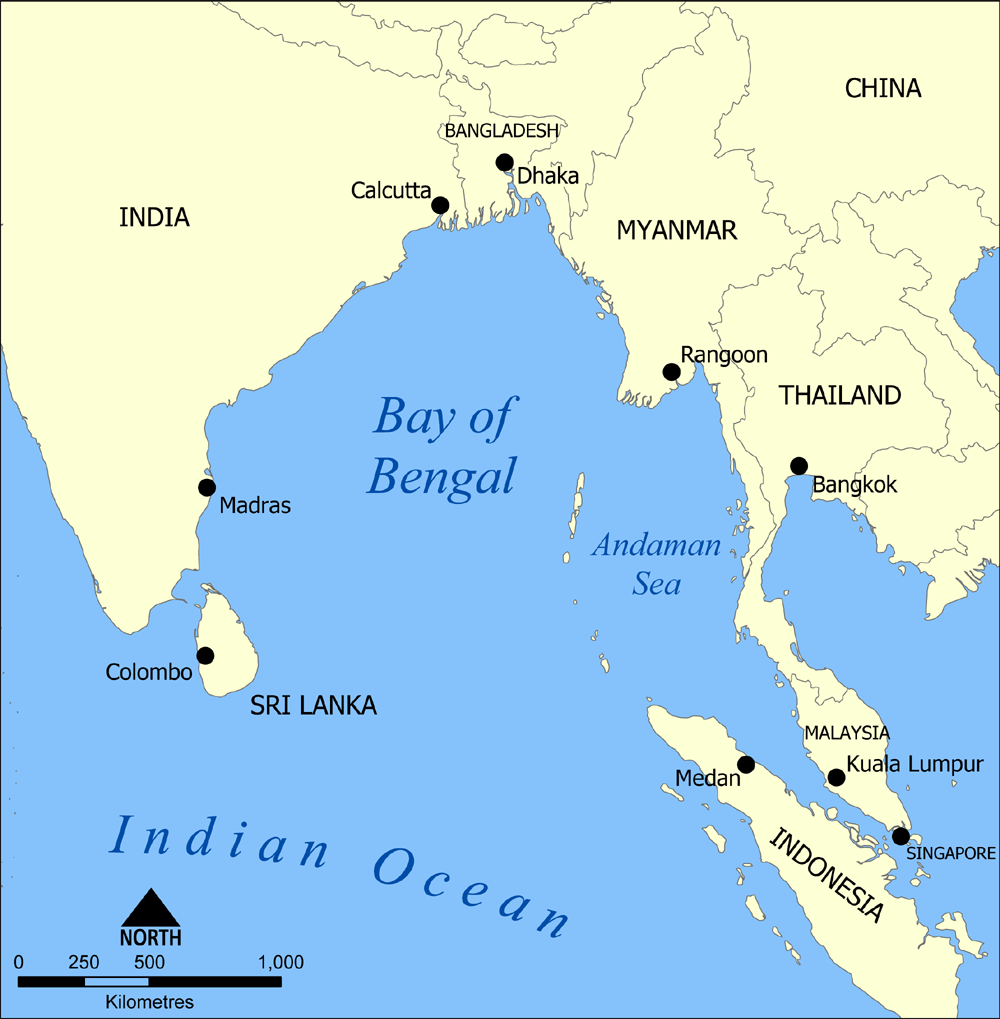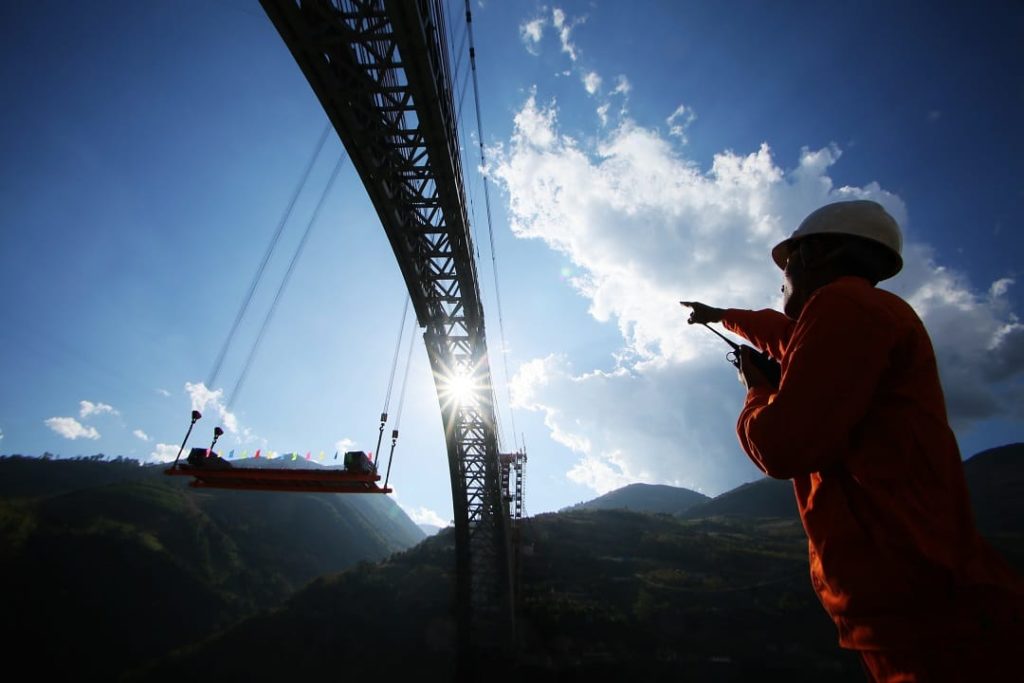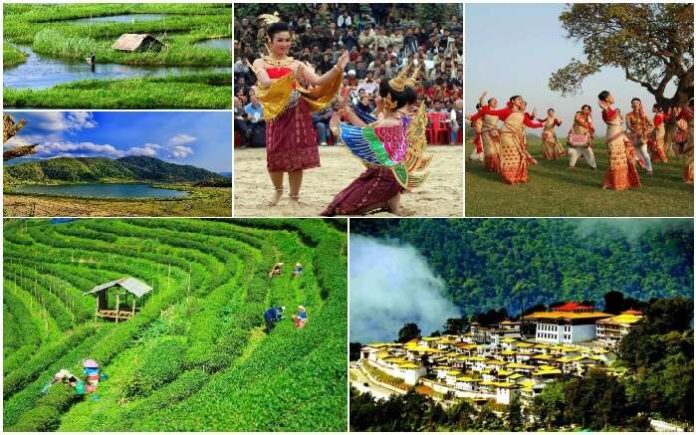The eastern fringe of South Asia comprising of Bangladesh and north-eastern India known as the “seven sisters” are a region that has been suffering over the decades from multiple problems including poverty, underdevelopment, overpopulation and others. While one hardly ever learns much about the seven sisters, Bangladesh is much more often in the news but mostly all for the wrong reasons.
Three centuries ago, the area now comprising Bangladesh was renowned as the bread basket of India. Multiple increases in population later, Kissinger in the 1970s called Bangladesh an “international basket case”. Starting from the artificial famine forced by the British in the mid-18th century in the area now comprising Bangladesh to the 1942 food famine, and then the 1954 floods and the 1970 cyclone, it has been a sorry litany of natural and man-made disasters, the poor Bangladeshi population has been on the receiving end. Bangladesh remains today a small country hemmed in by artificial political borders and prone to disasters of various dimensions and magnitude. If it is not floods, it is drought, if not drought, then cyclones and so on, the greatest problem is over population, too little land space for too many people. The present leadership is able to cope today in fact has done extremely well in the economic circumstance, but what about the future? This is a losing battle, fully 50% of the Bangladeshi population is less than 10 years old.

The Bay of Bengal occupies an area of 2,600,000 square kilometres. A number of large rivers flow into the Bay of Bengal: the Ganges Hooghly, the Padma, the Brahmaputra Jamuna, the Barak Surma Meghna, the Irrawaddy, the Godavari, the Mahanadi, the Brahmani, the Baitarani, the Krishna and the Kaveri. Important ports include Chennai, Ennore, Chittagong, Colombo, Kolkata-Haldia, Mongla, Paradip, Port Blair, Matarbari, Thoothukudi, Visakhapatnam and Dhamra. Among the smaller ports are Gopalpur Port, Kakinada and Payra. The maritime trade of this region historically centred around the eastern half of the Bay of Bengal. For the greater part of the sixteenth and seventeenth centuries, Bengal’s principal ports, Satgaon and Chittagong and subsequently Hooghly, maintained significant trading connections with Burma, Malacca, and Acheh. A second set of trade routes connected Bengal with Sri Lanka, Maldives, and the Malabar Coast, while a third, subsidiary route connected Bengal with Gujarat and West Asia.
For many centuries prior to British rule. The principal exports in the coastal and overseas traffic of Bengal were a range of manufactured goods and agricultural products, textiles, rice, wheat, gram, sugar, opium, clarified butter, and saltpetre. In return, historical Bengal imported spices, camphor, porcelain, silk, sandal-wood, ivory, metals, conch shells, and cowries, the last of which circulated as an important medium in Bengal’s monetary transactions. It was with the advent of the Portuguese in the sixteenth century that Bengal entered the web of Euro-Asian exchanges that were to become central to the region’s economy. Portuguese involvement in the trade of the Bay of Bengal began after the capture of Malacca in 1511. Later in the day, the importance of Bengal’s textiles and silk in the markets of Southeast Asia and Japan encouraged the English and Dutch East India Companies to enter into the commercial economy of Bengal. By the middle decades of the century, the Dutch and English, largely in response to the pressures of the spice trade in Southeast Asia, were participating in the intra-Asian trade of the Indian Ocean in a big way and had established a number of factories and settlements in Hooghly, Balasore, and Pipli. The result was an expanding demand for Bengal textiles, silk, opium, sugar, and rice in the markets of Southeast Asia, Sri Lanka, and the Coromandel. In return, Bengal imported huge volumes of metal and bullion, which helped service the monetary system of the region. The unprecedented expansion of English private trade in the 18th c. had two important consequences. On the one hand, it displaced Hooghly and the Asian merchants from the Indian Ocean trade, and on the other, it cut into the operations of the Dutch trading company. At this time the private merchants’ trade embraced both the westward and eastward segments of Bengal’s maritime traffic. European shipping, and in particular English shipping, absorbed virtually the bulk of the freight trade and it became common for private traders to carry Indian merchants’ goods in addition to their own.

China has recently made efforts to project influence into the region through heavy investment in Myanmar and Bangladesh. Large deposits of natural gas in the areas within Bangladesh’s sea zone add to the attraction of this region. To quote my article “BANGLADESH AND LEBENSRAUM THE AESSA CONCEPT” as far back as March 26, 1990, over three decades ago, “If Bangladesh’s problems were confined to over-population and natural disasters that retard economic growth, it would be bad enough, problem is that Bangladesh has the world’s only predator nation, India, on its doorstep. Instead of helping to alleviate the miseries of its poor neighbour, desperately keeping its head (literally) above the rising waters, Indian machinations in Bangladesh know no end. More than anything else, India’s undue interference has contributed to increasing the poverty and sufferings of the Bangladeshi people. Two decades into existence as an independent nation, Bangladesh still finds itself insecure, until and unless Indian designs of regional hegemony are frustrated, this Sword of Damocles will stay over the heads of 100 million people,” unquote.
The BRI initiative of China announced in 2013 finally brought an opening for BD to get integrated into the region. With the help of Chinese investment Bangladesh tries to improve the fate of its people. In a major move, Bangladesh and China in 2016 signed a Memorandum of Understanding on strengthening investment and production capacity cooperation in mid-October, with Bangladesh set to receive $24.45 billion in bilateral assistance from China for 34 projects and programs. Combined with a further $13.6 billion in Chinese investment in the form of 13 joint ventures, the sum of $38.05 billion is the biggest ever assistance pledged to Bangladesh by any single country. This Bangladesh-China agreement, however, was suspected to be part of a “zero-sum game” being played out between India and China over Bangladesh.
Today, only 5 years later, things don’t look that way anymore. China’s gross investment in Bangladesh amounted to only US$122.54 million in the last calendar year, 2020, tenth place among the top overseas investors in the country, official statistics showed. Chinese investment seems to be bound for new destinations following US-China trade spat and seems to bypass Bangladesh. The reason for it is said to be unattractive investment conditions with the result that Vietnam, Bangladesh’s inveterate competitor on the global apparel market, makes the most of the windfall with better hospitality for the rearward-floating capital investors. Instead, Bangladesh has found new ‘friends’ in the Japanese. Bangladesh’s first ever deep-sea port, Matarbari port that will be made functional by 2025 a joint venture contract has been signed earlier this year between Chittagong Port Authority with the Nippon Koei JV and Roads and Highways Department (RHD) with Oriental Consultants Global Company Ltd. A probable reason for this development is a change in the political stand of Bangladesh because of pressure from India and other counties interested din “containing” China. The change of investors from China to a member of the anti-China alliance Quad would bring Bangladesh further closer to India, another member of Quad. While that could be helpful in dealing with a difficult neighbour it would not force-multiply the economic emancipation of the people of this region because India cannot at all match Chinese economic strength and the western countries are going through “aid and grants fatigue”, they cannot disburse these as freely as they once did.
The construction of sea ports that connect Bangladesh and the inner-Asian territories of northeast India and western China both to maritime and road/rail trade routes has not only a long history but a favourable future as well. The situation needs out of the box thinking, bold and strategic vision is the necessity at this time.
Contributed by:

Former Professor of South Asian Studies, Humboldt University, Berlin, Editor of the Defence Journal and a Consultant to Pathfinder Group).





